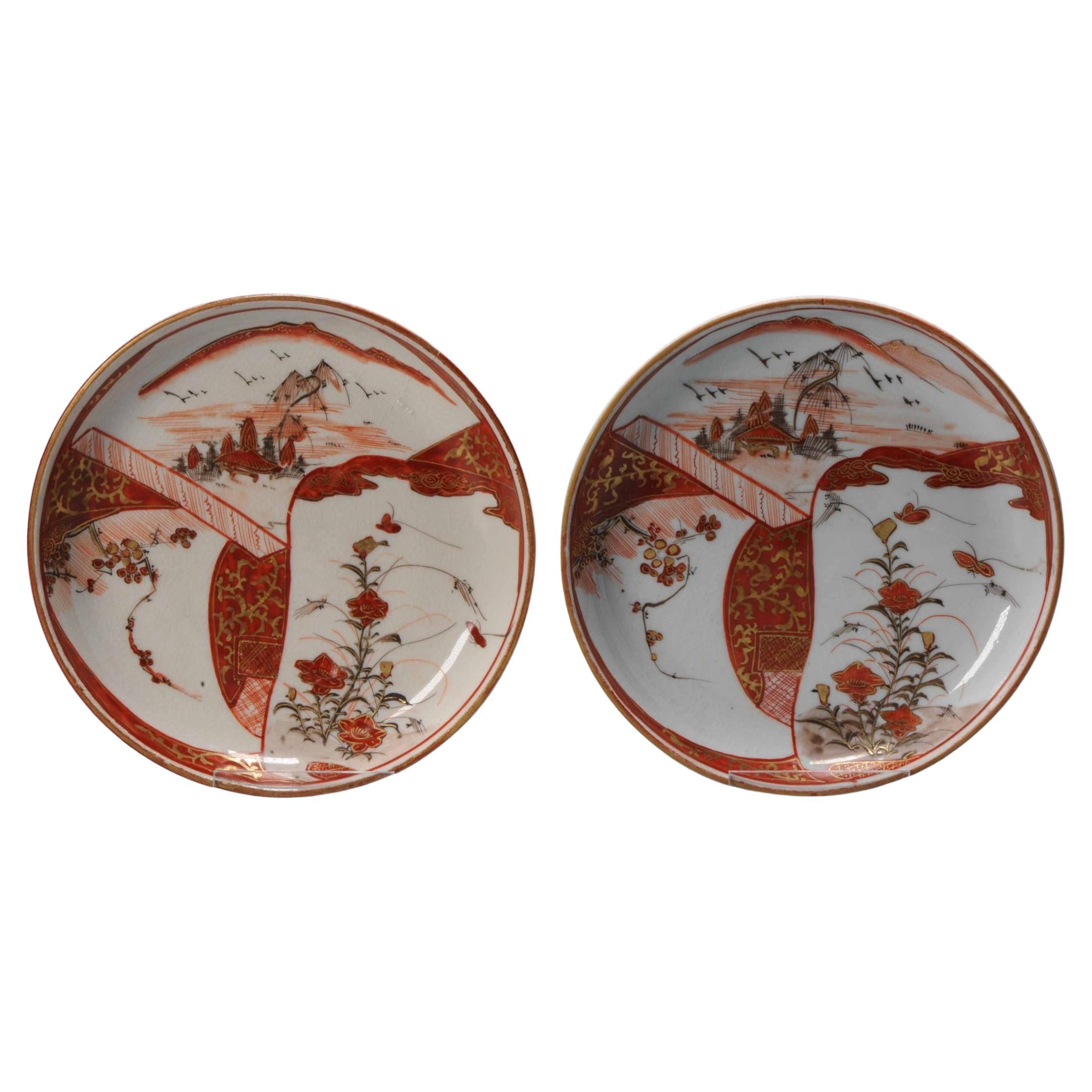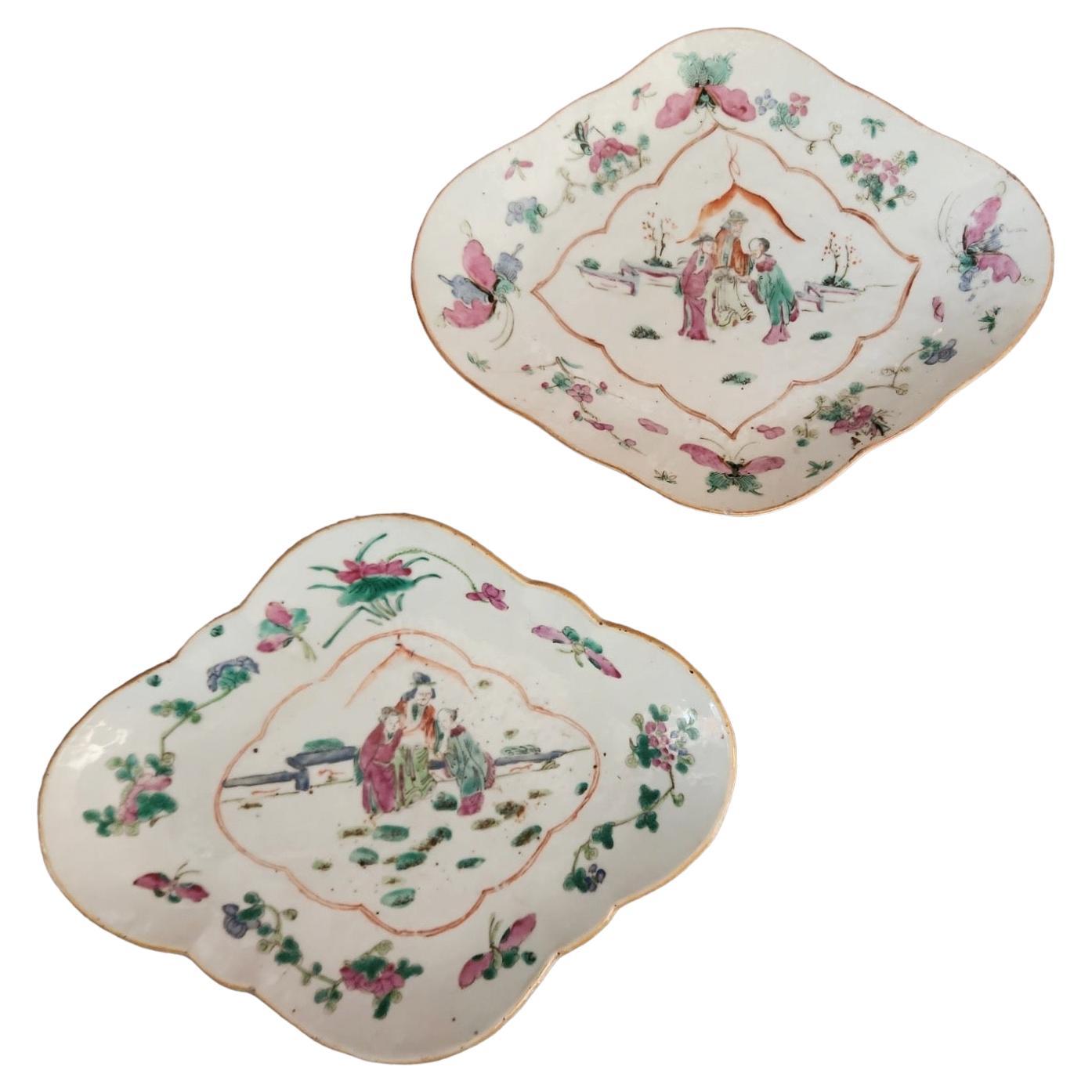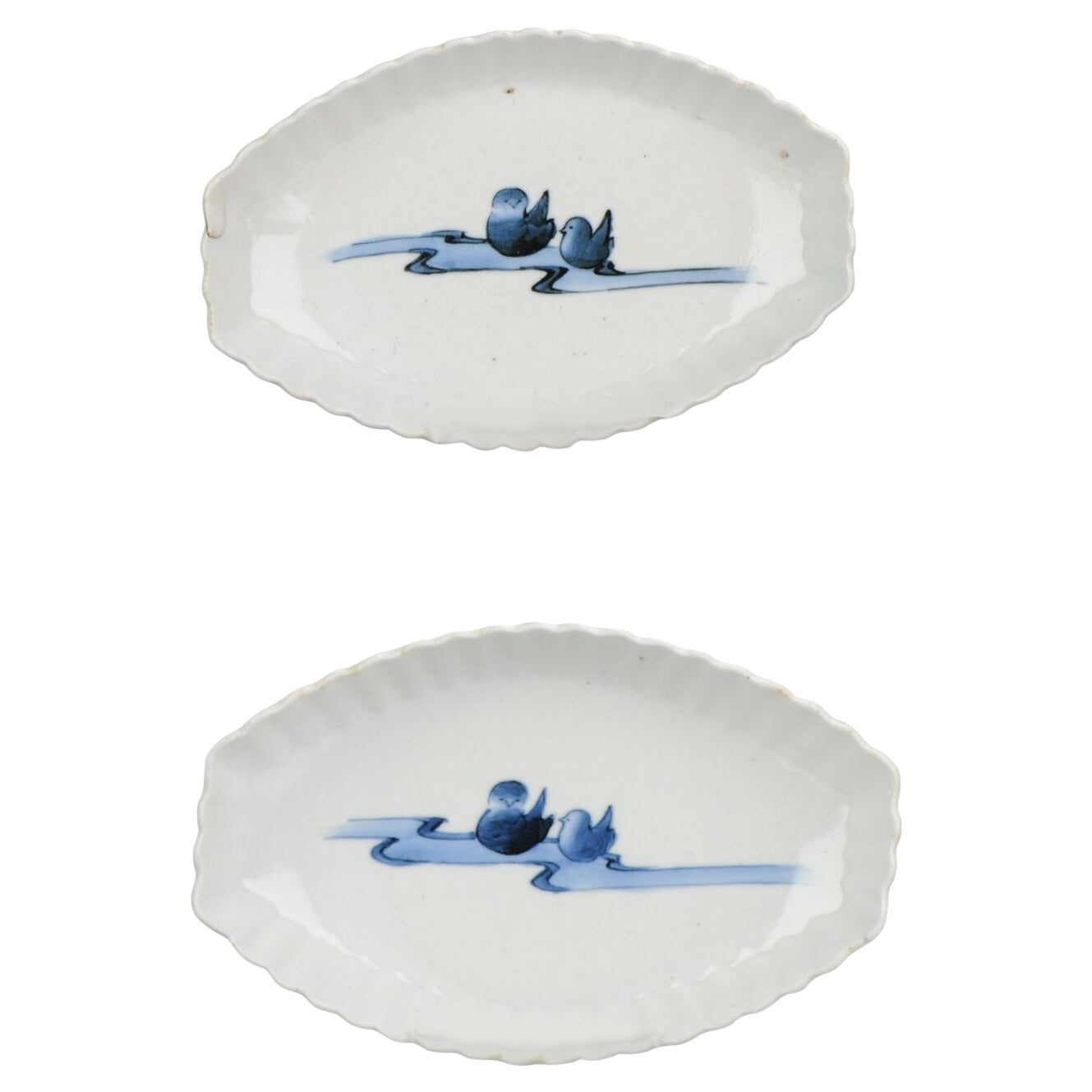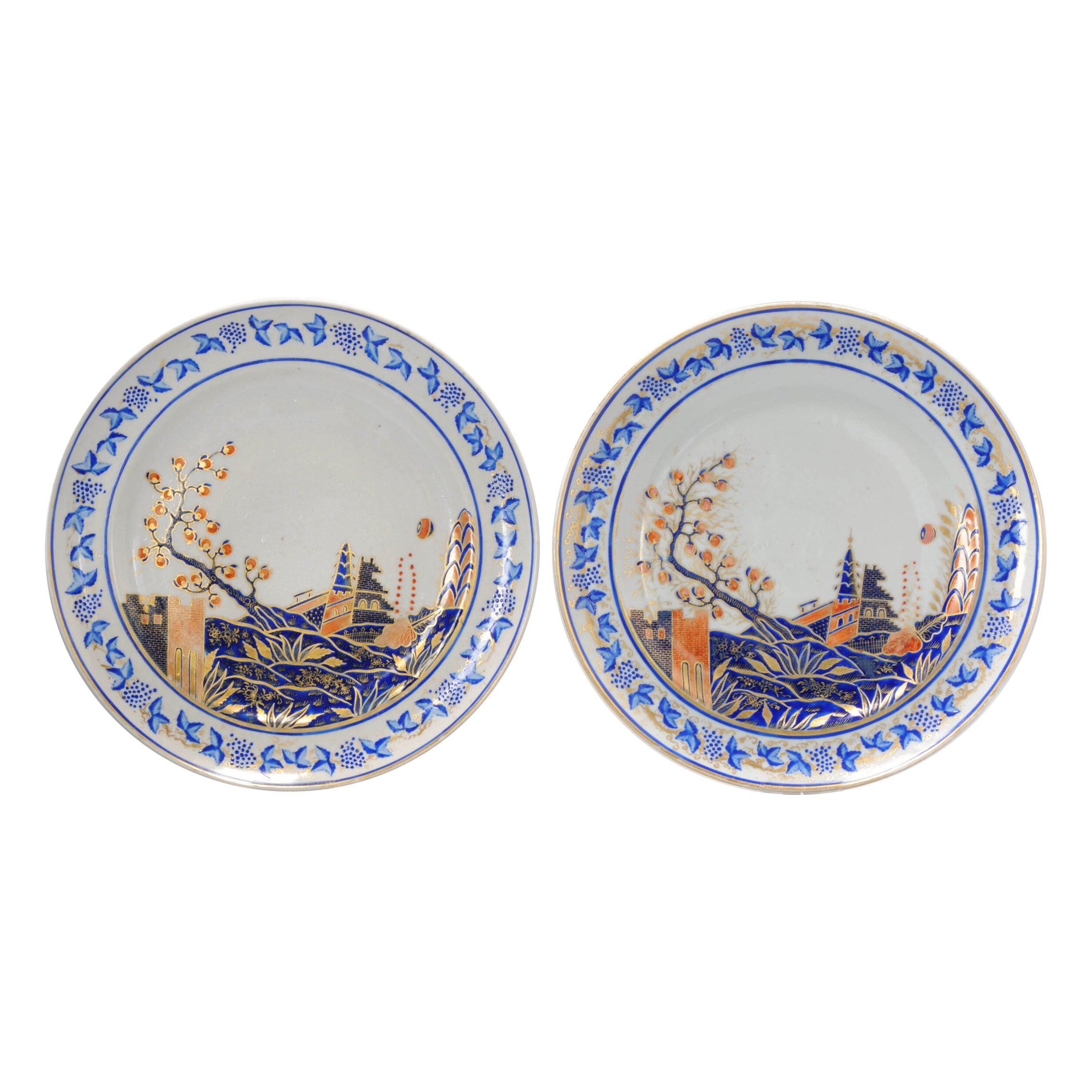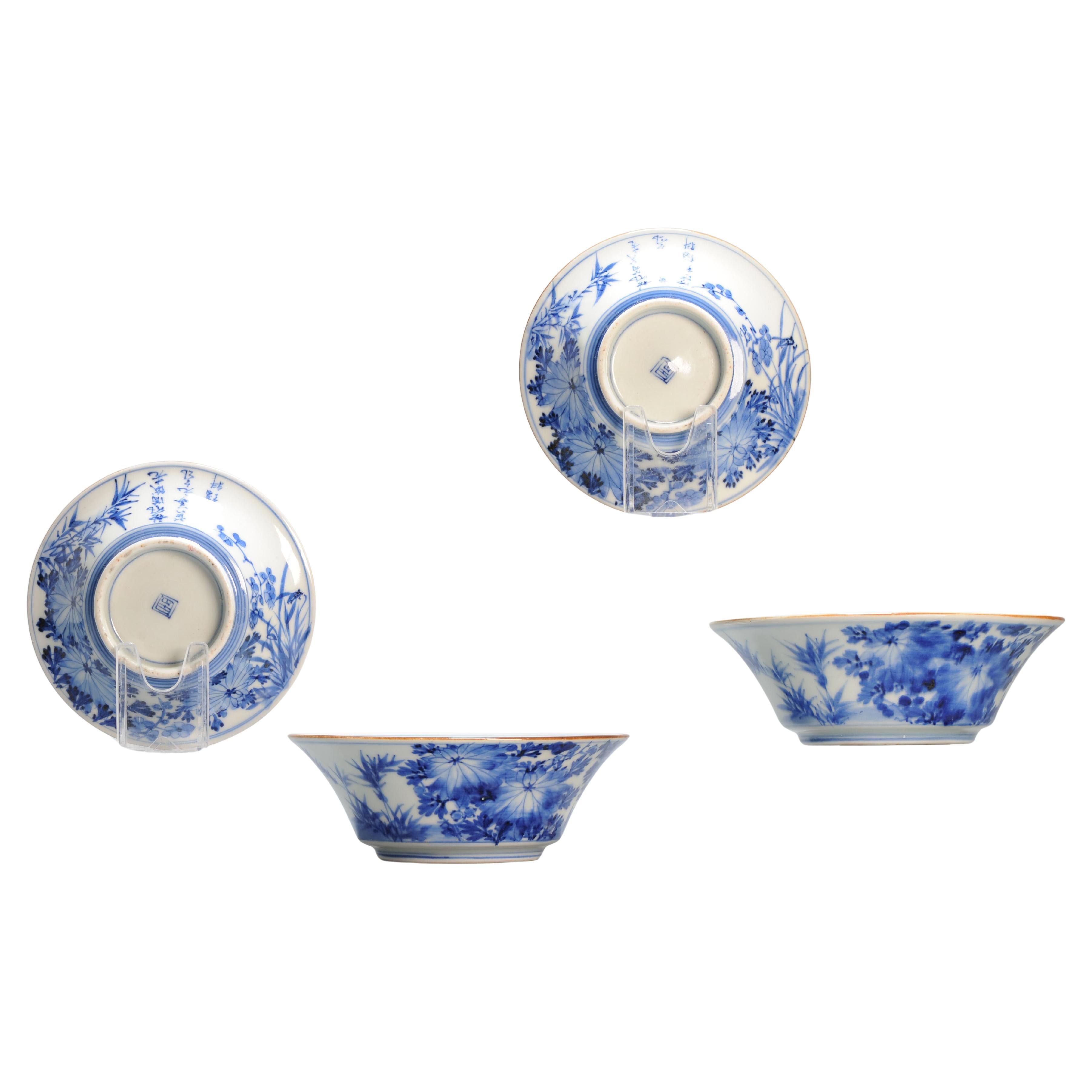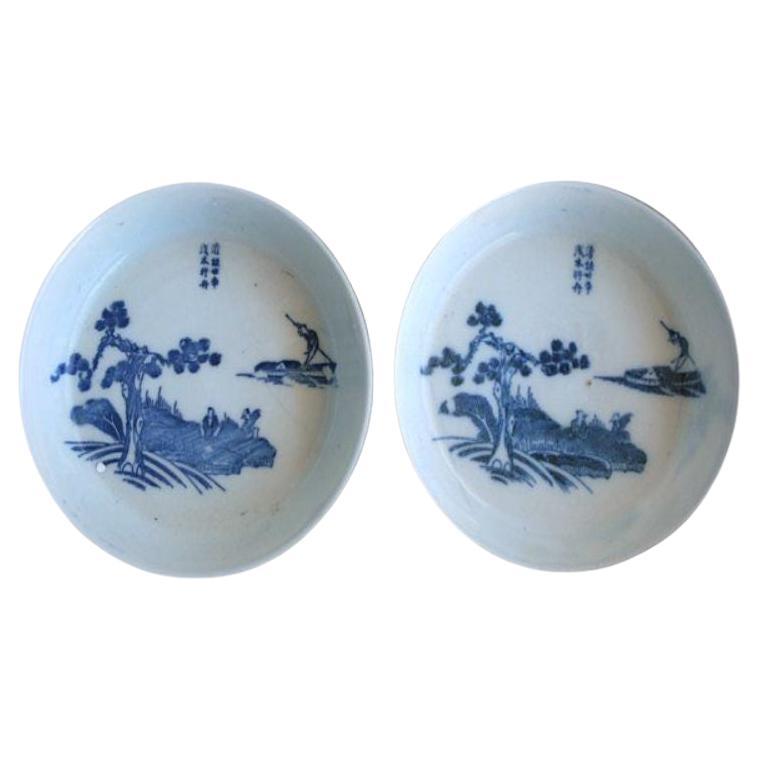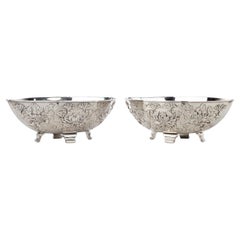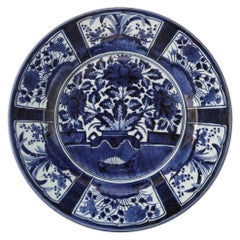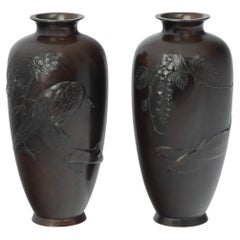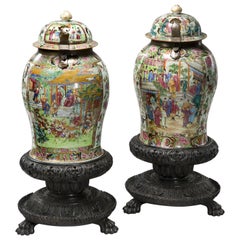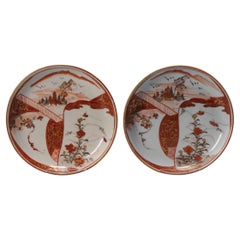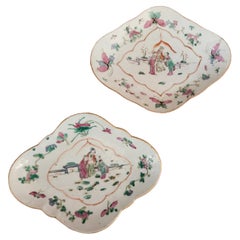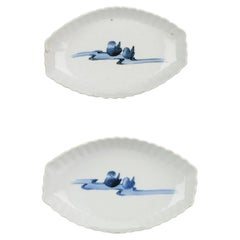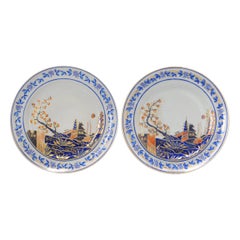Items Similar to A pair of Edo period ‘Scheveningen’ design Arita export dishes
Want more images or videos?
Request additional images or videos from the seller
1 of 5
A pair of Edo period ‘Scheveningen’ design Arita export dishes
$17,469.62per set
£12,750per set
€14,872.19per set
CA$23,929.02per set
A$26,614.29per set
CHF 13,897.16per set
MX$323,867.62per set
NOK 177,487.89per set
SEK 166,452.33per set
DKK 110,996.84per set
Shipping
Retrieving quote...The 1stDibs Promise:
Authenticity Guarantee,
Money-Back Guarantee,
24-Hour Cancellation
About the Item
Each of these decagonal saucer-dishes is painted in underglaze-blue with a landscape of two Dutchmen and a boy warmly wrapped up and wearing large hats, two appear to be skating and one has a cow on a rope, in front of a hill fort flying a flag and the roofs of a town showing below the water line, possibly indicating the presence of dykes, the rims painted chocolate brown, the reverse with an underglaze seal mark and a paper sticker ‘Du Boulay Collection, P 297’ , one with a minor restoration. Japanese, circa 1700.
Anthony du Boulay was at Christie’s from1949 to1980 and Honorary Adviser on Ceramics to the National Trust, on the council of the Oriental Ceramic Society, chairman of the French Porcelain Society and of the DNHAS (Dorset County Museum). In one of his numerous publications there is an illustration of a very similar dish from the Ashmolean Museum ( John Ayers, J.V.G. Mallet, Oliver Impey, Anthony du Boulay and Lawrence Smith, catalogue, ‘Porcelain for Palaces: The Fashion for Japan in Europe 1650-1750’ , 1990. p113, fig. 67. An exhibition organised jointly with the British Museum in the New Japanese Galleries, 6 July to 4 November 1990). There is another in the Dr and Mrs. Roger G. Gerry Collection in the Metropolitan Museum, New York described as ‘Arita ware, Kakiemon type’ . Both these dishes have bracketed rims, probably influenced by silver dishes, whereas these examples have decagonal rims more in keeping with Kakiemon production. This design has traditionally been called ‘Scheveningen’ after a popular drawing by Frederick van Frijtom (1652-1702) of a fishing village on the Dutch coast near The Hague.
- Dimensions:Height: 2.5 in (6.35 cm)Diameter: 6 in (15.24 cm)
- Sold As:Set of 2
- Style:Edo (Of the Period)
- Materials and Techniques:
- Place of Origin:
- Period:1700-1709
- Date of Manufacture:Circa 1700
- Condition:Wear consistent with age and use.
- Seller Location:Lymington, GB
- Reference Number:1stDibs: LU973035748372
About the Seller
5.0
Recognized Seller
These prestigious sellers are industry leaders and represent the highest echelon for item quality and design.
Established in 1982
1stDibs seller since 2013
132 sales on 1stDibs
Typical response time: 2 hours
Associations
LAPADA - The Association of Arts & Antiques Dealers
- ShippingRetrieving quote...Shipping from: Lymington, United Kingdom
- Return Policy
Authenticity Guarantee
In the unlikely event there’s an issue with an item’s authenticity, contact us within 1 year for a full refund. DetailsMoney-Back Guarantee
If your item is not as described, is damaged in transit, or does not arrive, contact us within 7 days for a full refund. Details24-Hour Cancellation
You have a 24-hour grace period in which to reconsider your purchase, with no questions asked.Vetted Professional Sellers
Our world-class sellers must adhere to strict standards for service and quality, maintaining the integrity of our listings.Price-Match Guarantee
If you find that a seller listed the same item for a lower price elsewhere, we’ll match it.Trusted Global Delivery
Our best-in-class carrier network provides specialized shipping options worldwide, including custom delivery.More From This Seller
View AllPair of Meiji Period Solid Silver Bowls by Eigyoku
Located in Lymington, Hampshire
A pair of Meiji period solid silver bowls by Eigyoku, each of lobed oval form on four scroll feet, deeply embossed with continuous chrysanthemum hea...
Category
Vintage 1910s Japanese Meiji Metalwork
Materials
Silver
$26,307 / set
A Japanese Edo period export porcelain charger
Located in Lymington, Hampshire
A large Arita charger of circular form painted in rich cobalt blue under thick glossy glaze with a central vase of thee peony sprays on a platform, the e...
Category
Antique Early 1700s Japanese Edo Ceramics
Materials
Porcelain
A pair of Meiji period bronze vases
Located in Lymington, Hampshire
A pair of Meiji period bronze vases, decorated in high relief, one with a pheasant perched on a branch of prunus blossom and the other with two carp swimming under a bough of wisteri...
Category
Antique Early 1800s Japanese Meiji Metalwork
Materials
Bronze
$5,754 / set
Matched pair of Cantonese enameled porcelain standing jars
Located in Lymington, Hampshire
Matched pair of Cantonese enameled porcelain standing jar. On original hardwood bases.
Category
Antique Mid-19th Century Chinese More Asian Art, Objects and Furniture
Materials
Porcelain, Hardwood
Large Pair of Mixed Metal Meiji Period Vases
Located in Lymington, Hampshire
A large pair of mixed metal Meiji Period vases,
Each of baluster form, with ring and mask handles, decorated throughout with silver gold and shak...
Category
Antique Late 19th Century Japanese Meiji More Furniture and Collectibles
Materials
Metal
$17,469 / set
Pair of Exhibition Quality Meiji Period Rotating Bronze and Mixed Metal Vases
Located in Lymington, Hampshire
Each of baluster form with a trumpet neck and oni-mask handles, set on a tripod base with high splayed feet and a turned circular base with a central aperture, worked in high relief ...
Category
Antique 1880s Japanese Meiji Vases
Materials
Bronze
You May Also Like
Pair of Antique Meiji Period Japanese Akae Kutani Plates w/ Flower Mark, 19th C.
Located in Amsterdam, Noord Holland
Faboulous japanese porcelain plate. With box. Mark at the base.
Additional information:
Material: Porcelain & Pottery
Japanese Style: Satsuma
Region of Origin: Japan
Period: 20th ce...
Category
20th Century Japanese Meiji Decorative Dishes and Vide-Poche
Materials
Porcelain
$262 Sale Price
23% Off
Pair of Chinese Export Footed Dishes
Located in Los Angeles, CA
No breaks, cracks or fractures. Beautifully detailed.
Category
Antique 19th Century Chinese Chinese Export Ceramics
Materials
Porcelain
$1,295 / set
Pair of Edo Period Japanese Porcelain Plate Antique Ko-Imarii, ca 1670-90
Located in Amsterdam, Noord Holland
A very nice Ko-imari pair of Plates.
Additional information:
Material: Porcelain & Pottery
Region of Origin: Japan
Period: 17th century
Age: Pre-1800
Condi...
Category
Antique 17th Century Japanese Decorative Dishes and Vide-Poche
Materials
Porcelain
$2,777 Sale Price
20% Off
Set of 2 Antique Chinese Porcelain Qianlong/Jiaqing Baron of Itamaraty Plate
Located in Amsterdam, Noord Holland
A very nicely decorated plate, with an unusual combination of underglaze blue and overglaze enamels.
Sharing with you this interesting and vividly painted dish, most probably from a...
Category
Antique 18th Century Chinese Qing Decorative Dishes and Vide-Poche
Materials
Porcelain
$2,666 Sale Price / set
20% Off
Antique Japanese Arita 18/19th c Edo Period Unusual Landscape Lidded Bowls
Located in Amsterdam, Noord Holland
Very happy with this new arrival. Two lidded bowls with calligraphy and landscape scene. Marked at the top of the lid.
Arita
Condition
1 lid with a chip to the upper rim only. Siz...
Category
Antique 19th Century Japanese Edo Decorative Bowls
Materials
Porcelain
$1,014 Sale Price
20% Off
Pair of 19th Century China Earthenware Plates
Located in Marseille, FR
Pair of 19th century Chinese earthenware plates with a height of 3 cm and a diameter of 15 cm.
Additional information:
Material: Earthenware & Ce...
Category
Antique 19th Century Dinner Plates
Materials
Earthenware
